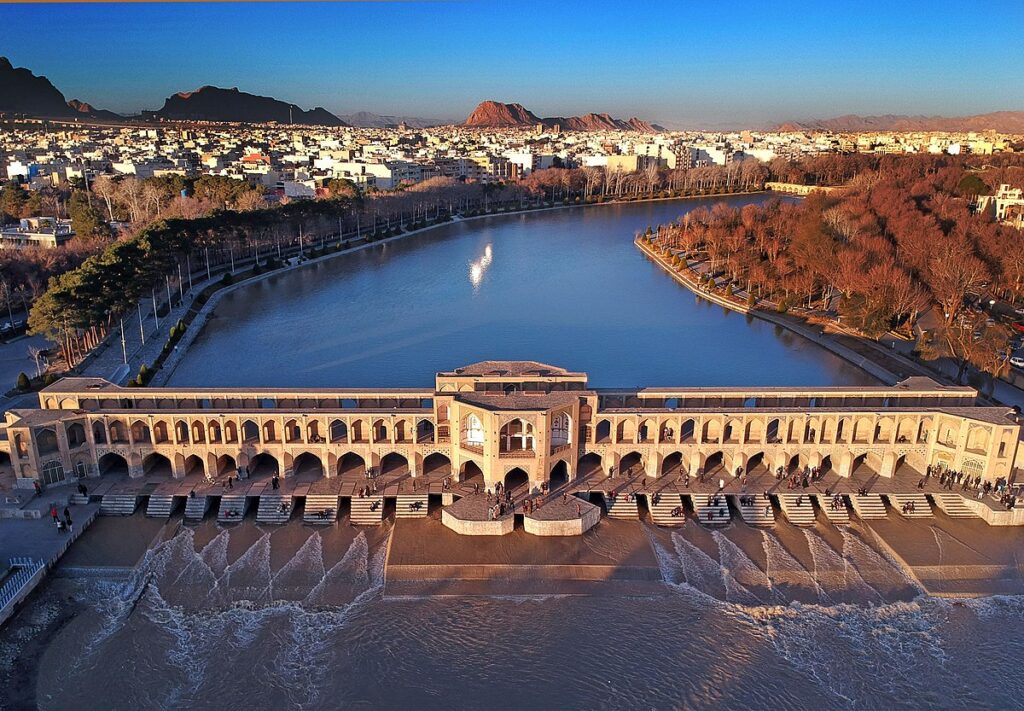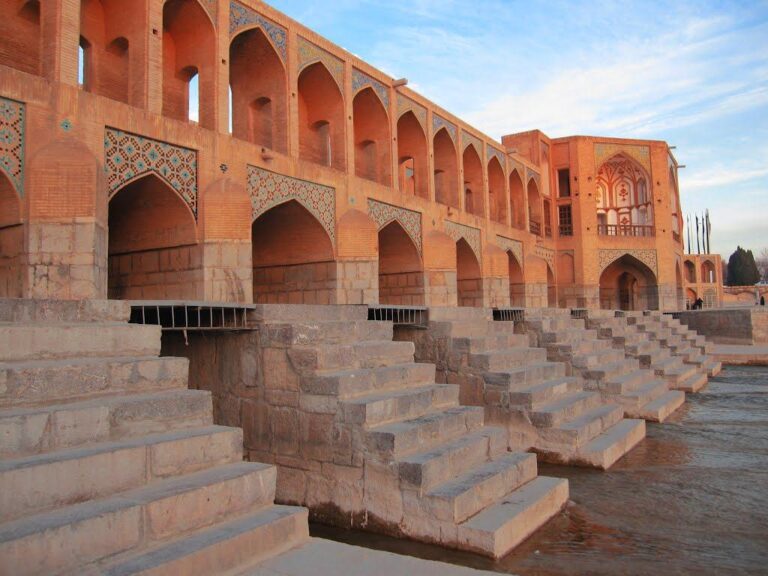
Khaju Bridge, one of the most magnificent bridges in Isfahan, Iran, is a remarkable example of Persian engineering and architecture. Built during the Safavid era, this bridge is not only a functional structure but also a work of art and a cultural landmark. Located on the Zayandeh Rud River, Khaju Bridge serves as both a dam and a gathering place, reflecting the artistic and engineering brilliance of Safavid-era architects.
History of Khaju Bridge
Khaju Bridge was constructed in 1650 CE by order of Shah Abbas II, the Safavid ruler. It was built on the remains of an older bridge and was designed to serve multiple purposes:
- Connecting different parts of Isfahan, including royal and residential areas.
- Functioning as a dam, controlling water levels of the Zayandeh Rud River.
- Serving as a royal pavilion, where the Safavid king and his court could relax and enjoy the view.
Today, despite periods of drought affecting the Zayandeh Rud River, Khaju Bridge remains a symbol of Persian architectural ingenuity and a major tourist attraction.
Architectural Features of Khaju Bridge
Khaju Bridge is not just a crossing structure; it is an aesthetic and social space. Some of its key architectural and design features include:
1. Dual-Purpose Design: Bridge and Dam
Khaju Bridge is both a bridge and a dam, featuring sluice gates that regulate water flow. This dual functionality showcases the advanced hydraulic engineering of the Safavid era.
2. Elegant Two-Story Structure
The bridge consists of two levels of arcades, with pedestrian walkways offering spectacular views of the river and city. The upper level was used by royalty, while the lower level was accessible to the public.
3. Stunning Decorative Elements
The bridge is adorned with intricate tilework, geometric patterns, and Persian motifs, making it not just a functional structure but also a visual masterpiece.
4. Unique Symmetrical Design
The perfect symmetry of the bridge, combined with its reflected image in the water, creates a mesmerizing effect, especially at night when it is illuminated.
5. Central Pavilion for the King
In the middle of the bridge, there is a royal pavilion where the Safavid king and his guests would sit and admire the river. This feature makes Khaju Bridge unique among Persian bridges.
Cultural and Social Importance of Khaju Bridge
Khaju Bridge has always been more than just a transportation route. It has been a place for gatherings, music, and poetry recitations. Even today, locals and tourists gather around the bridge to sing, converse, and enjoy the atmosphere.
Conclusion
Khaju Bridge stands as one of the finest examples of Persian bridge architecture, blending functionality, aesthetics, and social interaction. With its dual-purpose design, exquisite decorations, and historical significance, it remains one of Iran’s most celebrated landmarks.


No comments yet.